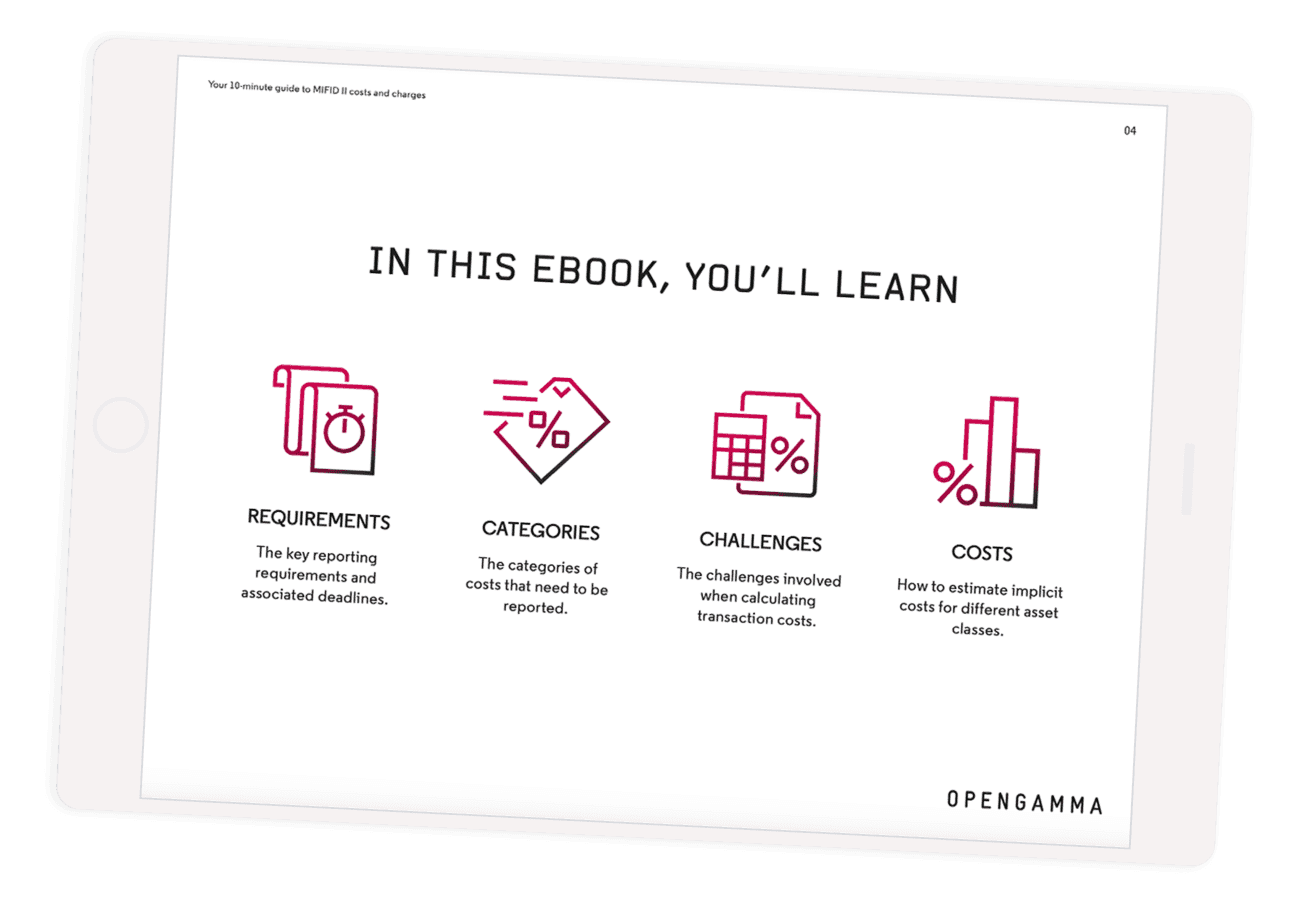Peter Rippon, CEO at OpenGamma
The asset management industry in the UK will be previewing the new industry standard for fee disclosure requirements in the coming weeks, warned Chris Sier, the chair of the Financial Conduct Authority’s taskforce set up to promote transparency. Mifid II’s goal of creating fairer and more open markets certainly dovetails with an era of an ultra-cost sensitive investor, and Sier’s taskforce was set up last summer to standardise the costs and charges data that fund managers disclose to their clients.
This requirement forces funds to reveal their trading costs to ensure investors know exactly where their money is going. All of a sudden, there is a much higher degree of scrutiny to understand, in great detail, the level of costs across an asset management business.
Essentially, this is money going out the door to bank counterparties which could perhaps be allocated more efficiently. Fund managers need to use the new information collated under the Cost and Charges rules not only to report back to investors, but to run analysis that unearths the true value of the business that they allocate to each counterparty. Only then can they make more informed decisions about where to allocate business to reduce overall trading costs.
This shift to analysing trade profitability is the only way to understand the real value of each bank relationship. Admittedly, this is easier said than done, and is a major hurdle to overcome for any fund running highly complex derivative trading strategies. Many of these firms are already under the cosh from end investors to deliver greater returns, which puts an even stronger emphasis on streamlining costs.
The first conundrum, is trying to accurately assess these key bank relationships by calculating costs that, until now, have never had to be calculated. Reporting the cost of trading less liquid, over the counter (OTC) derivative instruments, for example, is a much bigger challenge than reporting on the likes of cash equity. There is simply not enough price information available to easily work out a fair mid-price. But with the FCA’s taskforce restating its intent to publish fee transparency standards for illiquid assets in the coming weeks, it’s clear that these instruments will not be taking a backseat just because they present a greater challenge when it comes to calculating costs.
Take the trading of Interest Rate Swaps (IRS). For this type of instrument, the notional size, currency and market volatility levels will all be key to determining the size of the spread that will ultimately be paid. With derivatives instruments like this, fund managers are trading under varying market conditions daily. Therefore, they will need to collate specific data sets in order to get a true view of how large the bid-offer spread is through different counterparties, compared with the mid-market price of a given trading scenario. Trying to get a handle on these previously hidden costs is what makes accurately assessing counterparty relationships such a headache. If you don’t know what a fair mid-price for a particular scenario looks like, how can you judge if a counterparty is offering a good deal?
As this new regulatory landscape begins to take shape over the coming months, it is clear. Those with more purchasing power will ramp up competition between banks and ultimately, drive down end investor costs exactly as Mifid II intends.

